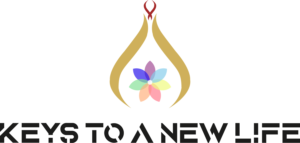ADDICTION
Traditional Chinese medicine (TCM) includes Chinese medicine and acupuncture. Chinese medicine consists of natural products, including plants, animals, and minerals. China has been practicing TCM for more than 2000 years, and for the past 200 years has been used in the treatment of drug addiction. In recent years, China’s State Food and Drug Administration (SFDA) officially approved ten Chinese medicines to treat opiate addiction, and at least six are in clinical trials. The general therapeutic principle of Chinese medicine developed was based on its unique theory of ” reinforcing healthy Qi and resolving and removing effects of toxicity.” Acupuncture, another essential part of TCM which was developed based on the principle that ” functions of the human body are controlled by the “12 regular meridians’ and ‘Blood Qi”, has been used in Chinese medicine as well as in Europe, the USA, and other countries, for controlling opiate addiction. Some advantages to using TCM for opiate detoxification include less harmful side effects, high safety, and ideal effects in inhibiting protracted withdrawal symptoms and relapse. Co-administration of TCM with modern medicine shows some synergistic effects in detoxification. Many TCM for detoxification also has efficacy in rehabilitating abnormal body functions induced by chronic drug use, including improving immune function, increasing working memory and preventing neurological disorders. Given that TCM is effective in the prevention of relapse and causes fewer side effects, it is used widely in treating opiate addiction.

NADA Treatment
An acupuncture protocol, known as The National Acupuncture Detoxification Association (NADA), was developed for drug withdrawal in the 1970s at Lincoln Detox in the Bronx. Based on the findings of Chinese neurosurgeon H.L. Wen, who examined how electrostimulation could relieve acute withdrawal symptoms related to opium by stimulating the ear’s Lung Point.
The disease is not important. The “patient” is important, because the patient has created the disease. The cause is in the patient; the disease is only a symptom. You can change the symptom, and another symptom will come up. You can force this disease by drugs, you can stop its expression, but then the disease will assert itself somewhere else and with more danger, more force – with a vengeance. So we will feel the “patient.” As we all aware education and experience equality important. But most important to get in tune with the “patient” and find the cause using both western and eastern medicine. We care and will build a rapport; and create a bridge on your healing journey!
Download this pdf if you would like more information, as this is one of the first English-language journals devoted to traditional Chinese medicine. This will help you to understand and you can discuss with the practioner more in detail for your faster recovery.
We are here to help you to recover you from the root!
Please call us or send email to find out how we can help you! Please download the a scientic journal to understand how tcm helps in your pain or illness.
Does acupuncture help with addiction recovery?
Sobo believes NADA acupuncture is more effective when participants are committed and receptive.
A strong desire to quit is needed. For example, you cannot be passive when trying to quit smoking. The NADA protocol will be effective if you have the mindset of “I’m going to give up smoking, and I’m going to do it the right way.”.
It’s important to understand that the overall process will take time, but Sobo says you should see results after a few sessions.

INQUIRE NOW
REACH US
Open Hours
Stay Connected
By entering your name and e-mail address, you give consent to receive our newsletter. You may unsubscribe at any time.
 PERSONAL GROWTH
PERSONAL GROWTH




